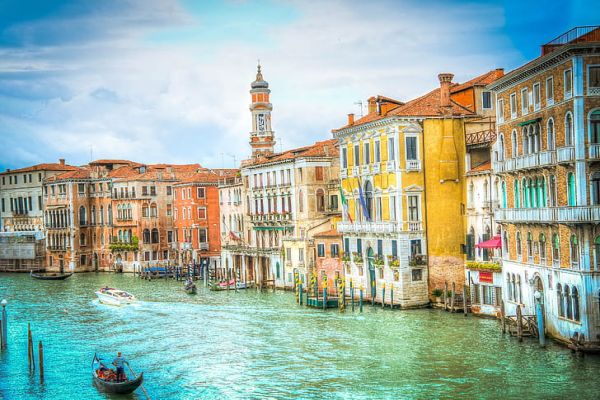Building on water
- POSTED ON: 18 Oct, 2024
- TOTAL VIEWS: 449 Views
- POSTED BY: Archana Subramanian | Text: Archita Suryanarayanan
- ARTICLE POINTS: 150 Points
In Venice, people say, every view is a painting. In a city built on water, you can cruise along beautiful canals rather than bumpy roads and admire splendid historical buildings at every corner. But besides the architectural marvels, did you know it was also a feat of engineering? Built on a swampy lagoon that could once barely support human weight, it has had buildings that have stood for over a thousand years.

According to tradition, a group of Italians fled to escape invaders and camped in this lagoon. Eventually, it became their permanent settlement. And they built not just ordinary buildings, but many architectural masterpieces.
But it was not easy territory to build on. So how did the buildings stand?
Below the cathedrals and palaces and houses of the city, there are thousands of closely placed wooden poles, that go underwater, past softer soil, and finally driven into the harder ground. In modern times, this is called a ‘pile foundation’ and is used in places with unstable soil. Above the vertical supports, wooden planks were placed, above which was a stone base, and then came the buildings. The buildings were built of brick to keep them light, and they were built to allow for some swaying. It was expected that since the piles are underwater, their exposure to salt water and minerals would make them last longer than if they were exposed to air. Some piles that are over 1000 years still exist, even if the buildings above them are from a later time.
Solve this jigsaw to get a glimpse of Venice
Welling up
Venice is surrounded by water, but when people started living here, they couldn’t drink the saltwater. So they engineered a rainwater harvesting system, with hundreds of tanks and underground cisterns built in the public squares. All the rainwater would be directed to the squares, get filtered, and then enter the wells from which people could draw water. The water was separated from the salt water of the Adriatic Sea. Eventually, newer plumbing systems were developed. But the decorative well heads of the old system still dot the city. Just like the buildings, they represent a fine, systematic engineering system hundreds of years old.
Try solving this jigsaw to see what a well head looks like